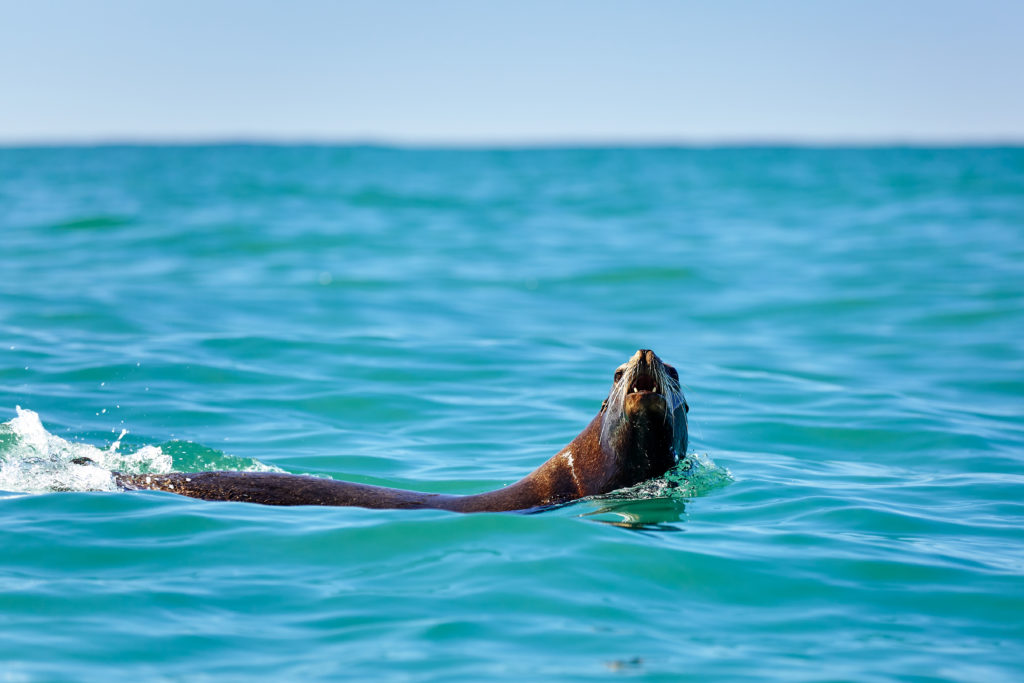An adventurous spirit is taking hold this summer, as we see our landscapes with fresh eyes. Meet five Sonoma locals who explore our wild spaces in bold ways—from fishing the coast in a kayak to foraging for wild foods to mountain biking the craggiest ridgetops.
Kayak Fisher Kyle Monte
Standing on the beach at Fort Ross, all geared up and ready to jump in his kayak, guide Kyle Monte adds one last warning: “If for some reason I’m unconscious and unresponsive and you need to call for help, here’s the button to push,” he says, pointing out a red button on the waterproof radio attached to his life vest that will send a GPS signal to the Coast Guard. What started out as a calm morning along the coast near Jenner, will likely get blown out, he says. That means we might have an hour or two to hook rockfish before the swells rise.
Welcome to the always unpredictable world of ocean kayak fishing on the Sonoma coast. You gotta work to catch your fish with Monte, owner-adventurer of Kayak Fish Sonoma. Riding high on top of the water on rigged-out, hands-free, pedal-powered kayaks, guests lure rockfish, lingcod, salmon, halibut, striped bass, even sturgeon from the rocky depths. Kayak fishing is a more visceral experience than other types of fishing, Monte tells me. The kayak moves with every swell, sea spray splashing your face. “It’s a much more hands-on experience. When the fish bites and pulls, your whole kayak is moving.”
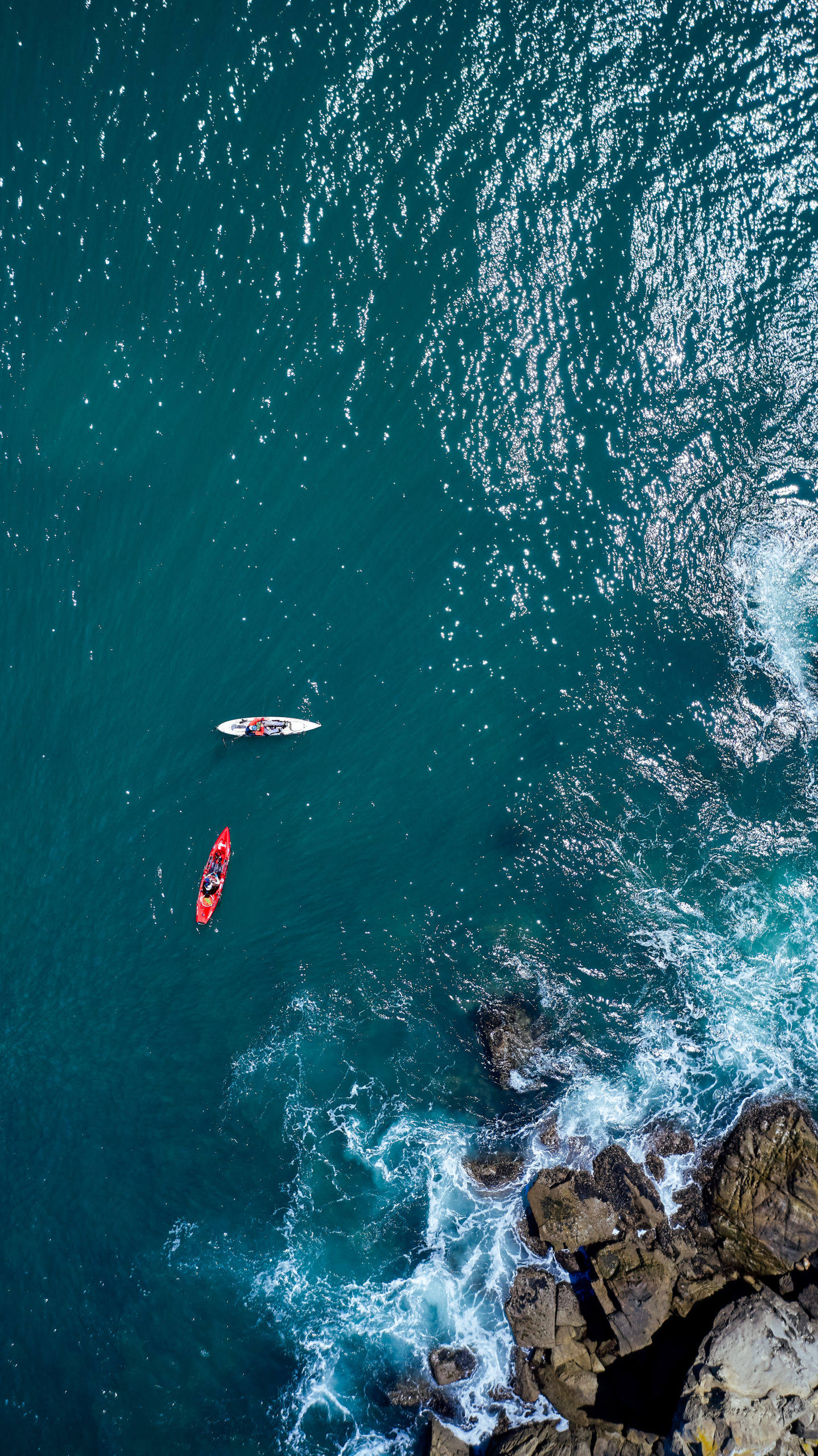
Whether guiding or fishing on his own, Monte watches the weather like a hawk, constantly checking NOAA updates and surfing apps so there are no surprises. “People forget how quickly the ocean can get out of control,” he says. “So I always go overboard with the safety.”
When the fish bites and pulls, your whole kayak is moving.
About a mile out, above craggy, uneven terrain, the first thing hooked is the bottom. “That’s what I call, ‘catching Cali,’” Monte jokes, before breaking the line and tying on new tackle. It doesn’t take long to land a black rockfish, which we decide to keep. But soon after, just as Monte predicted, the winds whip up and the fish hunker down.
We find calmer waters against a cliff in the same Fort Ross cove where Kashia Pomo people, and later, Russian settlers once found shelter. A seal and her month-old pup eye us from the shore, watching our every move. A few more curious seals pop up in the water around us. “I guess there are no greedy fish today,” Monte says, as we pedal back in, then pick up paddles and ride the breaking waves into shore.
“At least there’s something to throw on the grill tonight,” he says, after cleaning the rockfish and wrapping it for the trip home. After stuffing it with fresh herbs and lemon slices and grilling it whole, it tastes just like the ocean — a briny flavor even more satisfying knowing we had to paddle out and brave the waves to catch it.
— John Beck

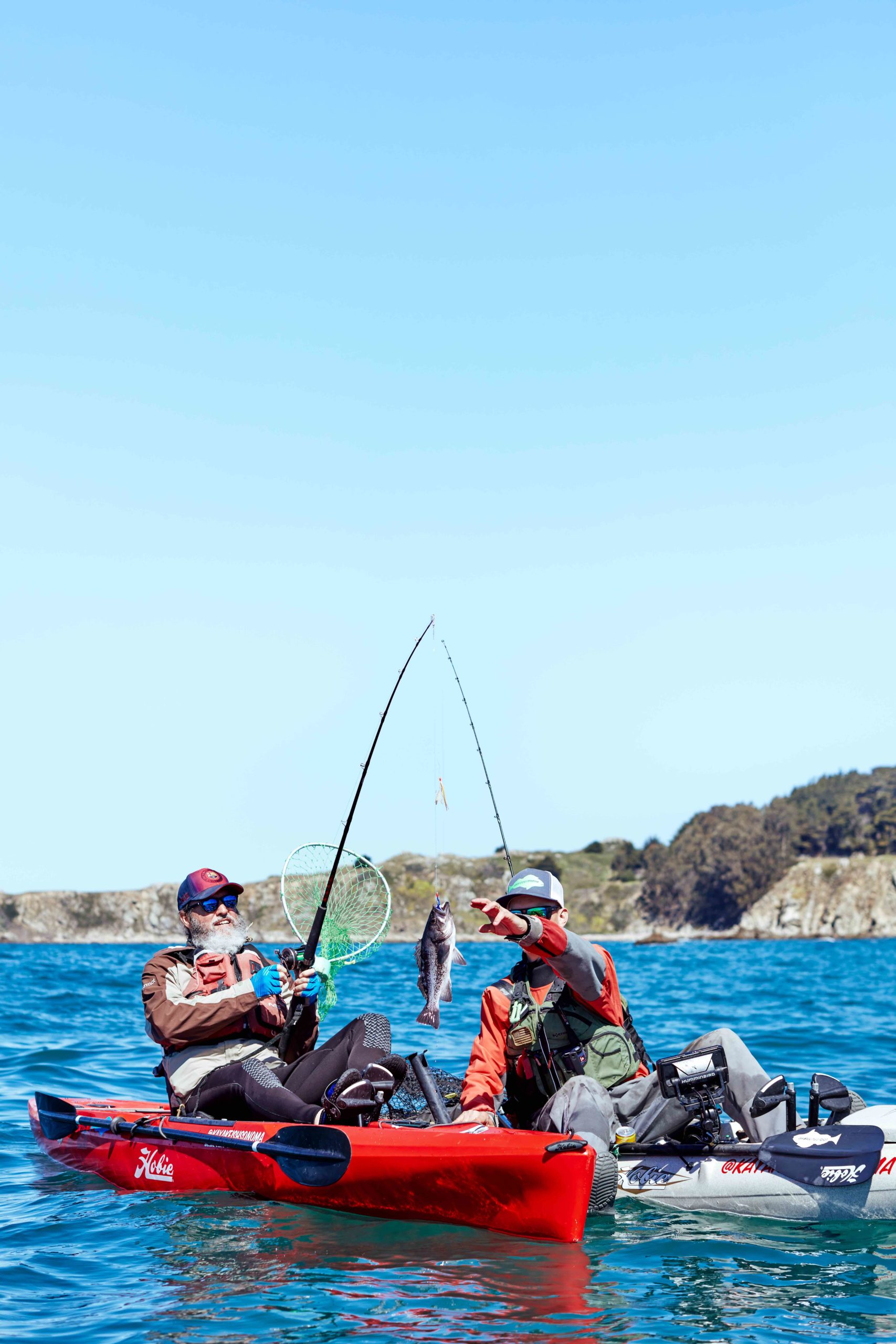
Heading Out
Guided trips: With a guide, kayak fishing on the Sonoma coast is a thrilling but accessible adventure. Monte’s business, Kayak Fish Sonoma, can take care of the details, starting at $300 per person including all equipment. “July, August, and September are hot months for salmon, when they’re close enough into shore to catch in kayaks,” Monte says. kayakfishingsonoma.com
Clubs: NorCal Kayak Anglers has an online forum with advice and fishing reports. norcalkayakanglers.com
Gear: Bodega Tackle, Petaluma, 707-559-3239
Mountain Biker Larissa Connors
Larissa Connors is the pro cyclist next door — and the best ambassador you’ll ever meet for getting out on Sonoma’s trails. Connors, who grew up riding in Annadel-Trione State Park and recently returned to Santa Rosa, is one of the country’s most decorated endurance mountain bike athletes, a two-time winner of the grueling Leadville 100 championship. She rides professionally for Voler Factory Racing, but she’s also mom of a toddler daughter, coaches a Santa Rosa youth mountain biking team, and teaches math at Petaluma High.
For Connors, riding Sonoma’s trails is more than just training and exercise. It’s engaging with the company of other riders— and a way to see Sonoma’s nature from a different perspective. “Here everything is just so gorgeous and bursting with life. And every second I’m on my bike, I just feel like it’s so full of joy,” she says. “There’s so much support and community and enthusiasm here around helping people get into this sport. And then you go on the trails—at Annadel or anywhere you go—and everyone’s happy, just celebrating being outside and appreciating it.”

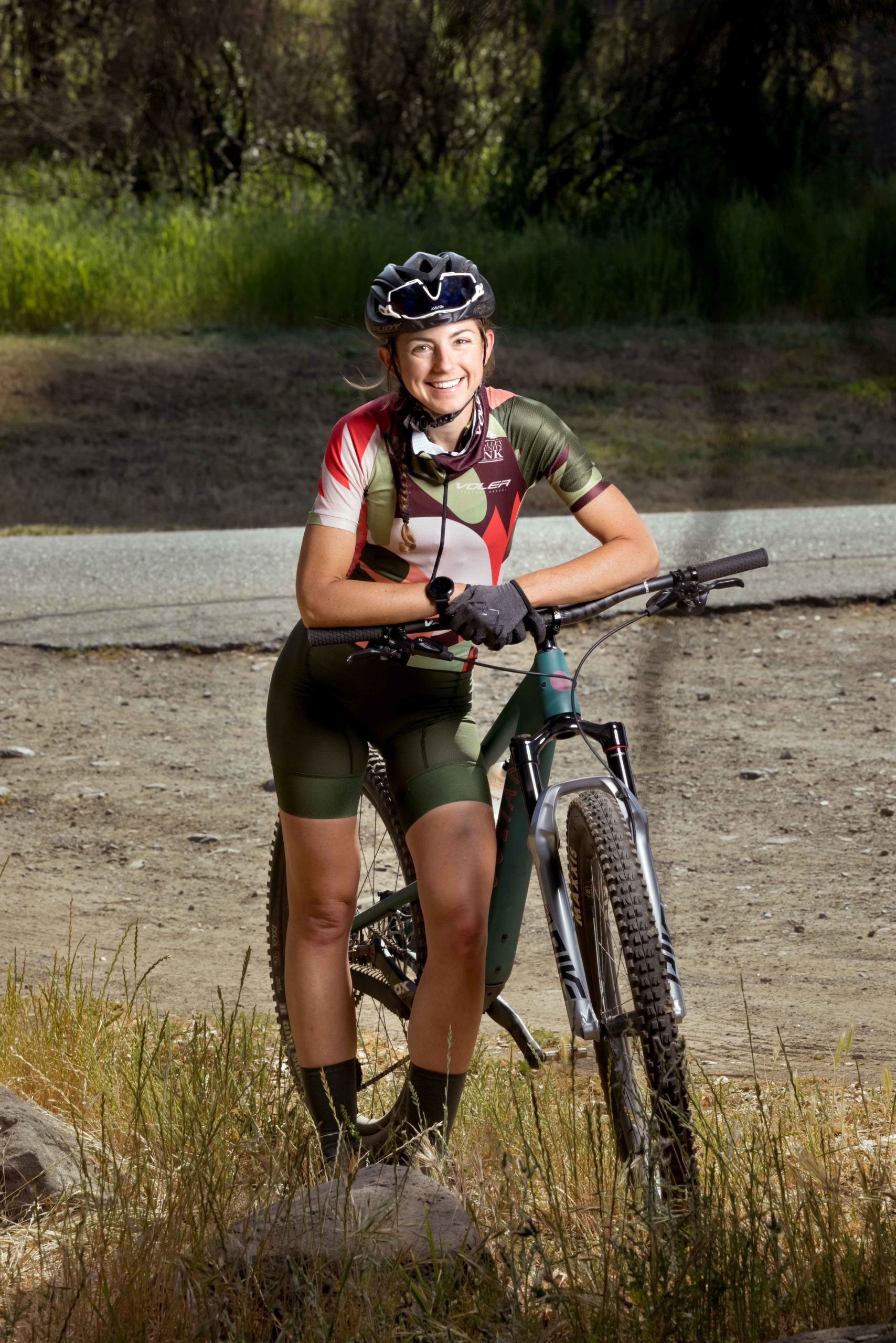
The bike community in Sonoma is tight-knit; riders cheer each other on and help out, even at elite levels. “I got a flat at Jack London, and I borrowed tools from two different groups of dudes… it’s just so helpful,” she laughs.
There’s so much support and community and enthusiasm here around helping people get into this sport. And then you go on the trails and everyone’s happy, just celebrating being outside.
In Connors’ world, one huge bonus to the bike scene in Sonoma County are the amazing post-ride meals: baked goods, burgers, milkshakes. She recently joked on Instagram that she doesn’t know whether she’s a cyclist with a pastry problem or a pastry lover with a biking problem. “Either way, I think ending up back in Sonoma County is the best thing that ever happened to me. We got an unlimited supply of butter being hugged by flour and miles of gorgeous roads in between!”
It’s all about getting out there, says Connors. “Just go pick a trail and commit…There are so many places in Sonoma County that are super beginner-friendly. And it 100% doesn’t matter if you have to hop off and walk something, because all of us started out that way… all of us walk obstacles at some point.”
— Abigail Peterson
Heading Out
Guided group rides: Santa Rosa’s TrailHouse often hosts group rides (see trailhousesantarosa.com for details), and Bell Joy Ride hosts women-only rides at all levels (on Facebook @ belljoyridesantarosa).
Clubs: The Redwood Empire Mountain Bike Alliance advocates for cyclists and builds trails. mountainbikealliance.org
Connor’s favorite beginner ride:
Windsor: Foothill Regional Park Oakwood to Alta Vista to Three Lakes Trail – 3 miles with a 500-foot climb. This is a very tame ride, says Connors, and a great place for someone brandnew to riding on dirt.
Near Occidental: Willow Creek Road Trail 19 miles out and back with a 1,000-foot climb. This is a gorgeous beginner ride on a wide fire road through redwoods.
Santa Rosa – North Sonoma: Ridge to Sonoma Ridge Trail 13 miles out and back with a 2,000-foot climb. This is a good pick for after you’ve built up some fitness, says Connors. It’s moderately technical with amazing views and options to extend the ride into Jack London State Historic Park.
To help navigate, Connors also recommends two apps: MTBproject (mtbproject.com) and Trailforks (trailforks.com).
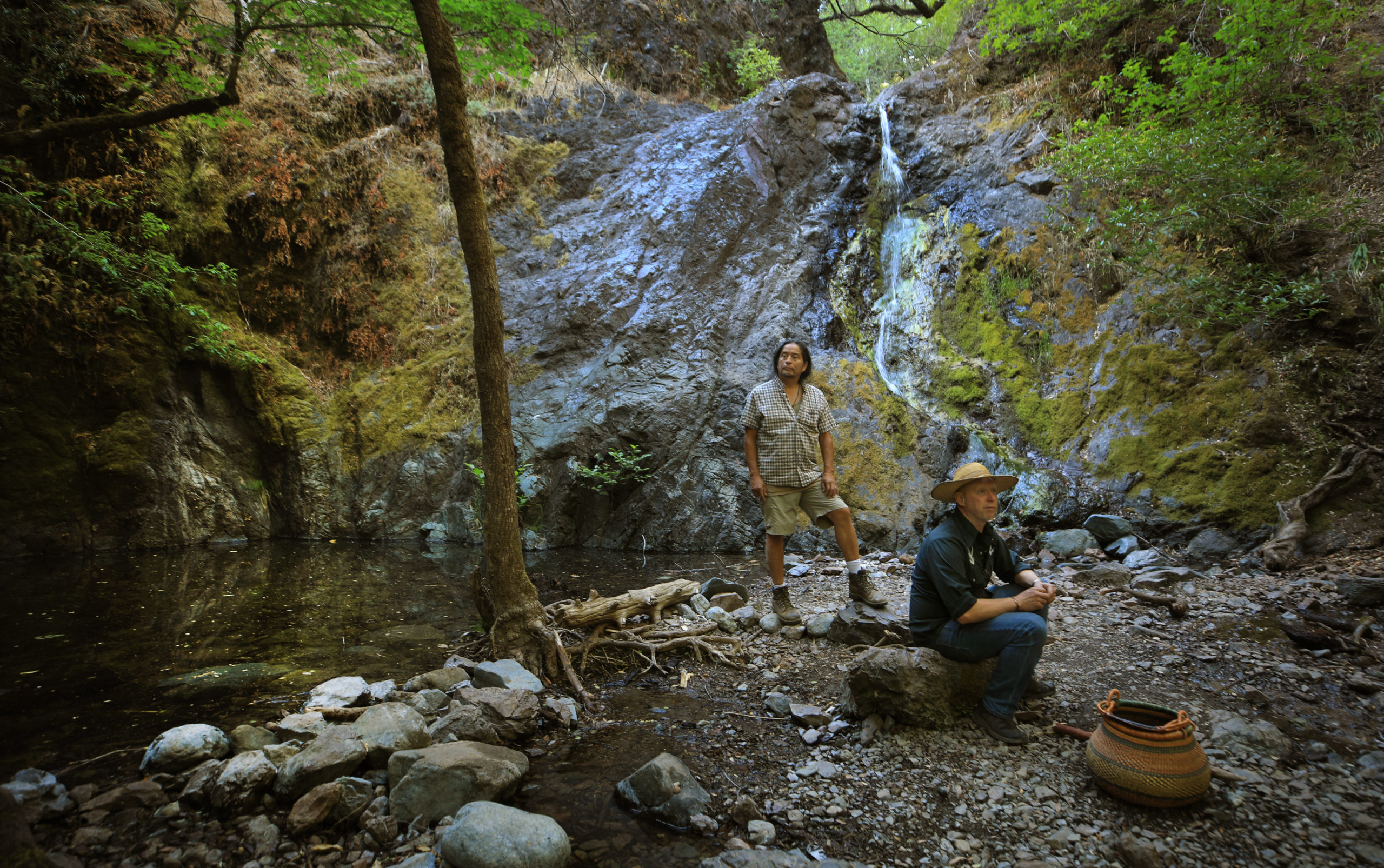
Wild Foods Chef Coby Leibman
Cicadas are clicking in the dappled shade as a group of wild-food enthusiasts pauses to listen.“There they are,” says naturalist Meghan Walla-Murphy. “They hadn’t made a sound until we stopped.”
Making time to be still and pay attention to the surrounding woodland is just part of what this group — which also includes chef Coby Leibman and two of his mentors, Tektekh Gabaldon and Redbird Willie — holds dear. Each patch of grass, each tree or wildflower, it seems, reveals a different story about the life of the landscape and those who inhabit it.
Take the California bay laurel, for instance. Its leaves are medicinal and act as insect repellent. And its nuts can be gathered from the ground and roasted. Then there’s soaproot, growing on a steep embankment near the foot of the bay laurel. Motioning to its wavy-edged long leaves, Gabaldon, a member of the Onatsatis Nation and a tribal monitor, explains how the plant was used in Native American fishing practices. “We’d rub that and place it in a part of the creek where the water pools and riffles, and it makes the fish comatose.”
Wild foods open up an understanding of how an ecosystem works when everything is in balance, explains Leibman. “Every three to seven years we get these masses of acorns that feed the squirrels and deer, so they then have high birthing rates because they’ve built up their fat, which then feeds the predators. So you get these cycles of the system building itself up.”
Wild foods open up an understanding of how an ecosystem works when everything is in balance.
Salmonberries, thimbleberries, elderberries, gooseberries peak in summer. But there are ways to harvest that create a sustainable system and more abundance for everyone. “When we pick huckleberries, for example, we break off all the end tips, which mimics natural grazers,” Leibman explains, adding, “The ways people wild-farmed for thousands of years—through cultural burning, aerating of soil, digging roots—created an abundance that you can still, in a lot of wild places, see the traces of.”
The traditions of foraging—of searching for pinole seed and curly dock, sour grass and wood sorrel, wild figs and loquats, seaweed and sea urchins—foster what Leibman describes as “a deep tranquility,” a sense of the interconnectedness among all strands of life, from the tiny ant to the mighty oak. “Foraging has given me a deeper understanding of our place within that system, tending to it and building up these communities. There’s sometimes a feeling that we need to be as hands-off as possible, but there’s a lot we can do to support and create life in a place too.”
— Trina Enriquez
Heading Out
Guided trips: A few times a year, Coby Leibman and Meghan Walla-Murphy lead Sonoma foraging trips with conservation group LandPaths. Expeditions teach about foraging etiquette, identifying plants, and cooking with wild foods. 707-5447284, landpaths.org
Guidebooks: Leibman recommends these titles for beginners.
The Bay Area Forager by Mia Andler and Kevin Feinstein
The Sea Forager’s Guide to the Northern California Coast by Kirk Lombard
The Forager’s Harvest by Samuel Thayer
Summer’s wild foods: Clover, wood sorrel, purslane, and dandelion greens Seeds of wild buckwheat, radish, black sage, and curly dock Fennel and mint Dandelion, chicory, and cattail roots Black walnuts and wild hazelnuts Prickly pear cactus fruit and pads Blackberries, elderberries,
manzanita berries, and madrone berries.

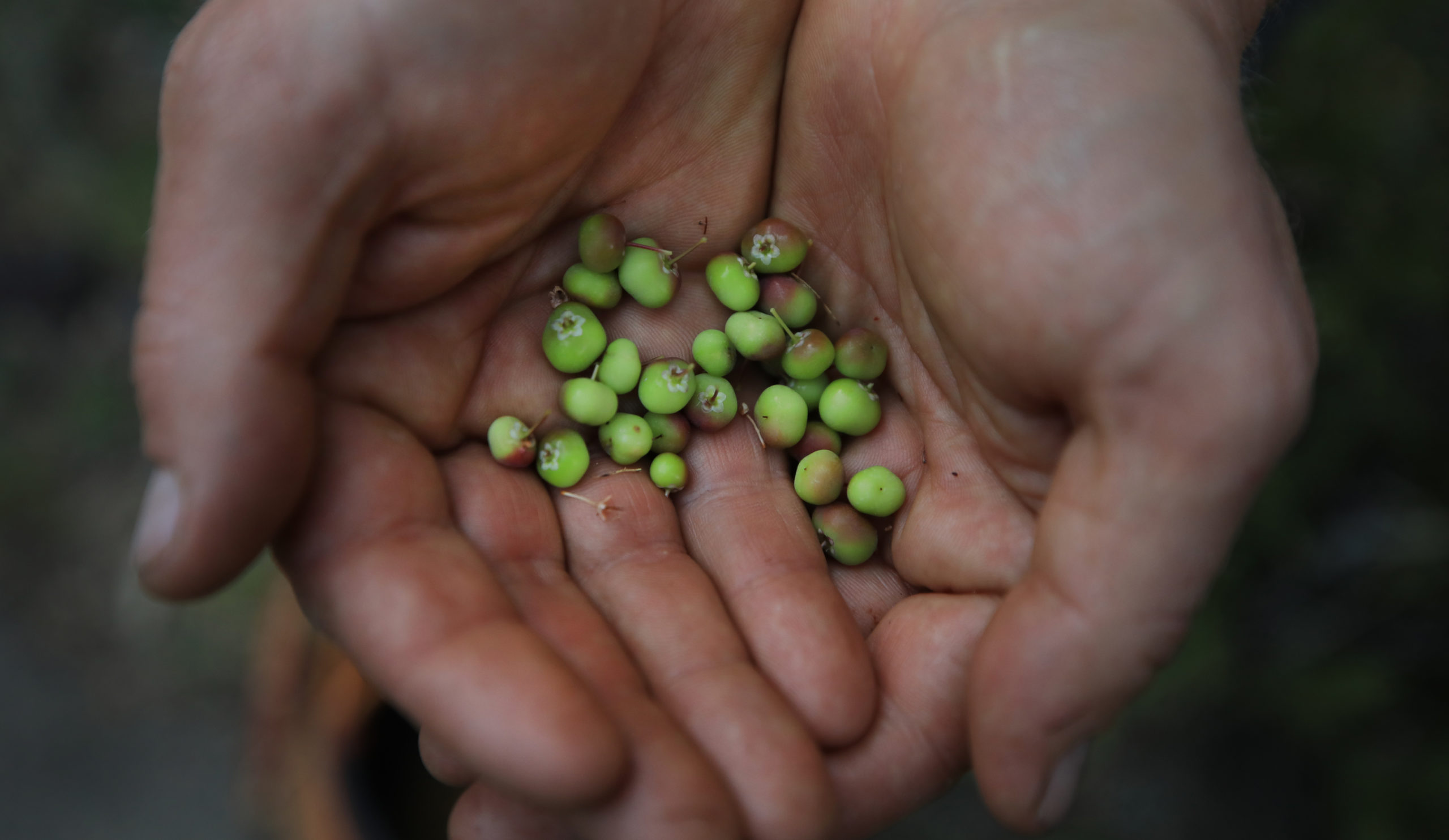
Plein Air Painter Sergio Lopez
Some take their time strolling through Healdsburg Ridge Open Space Preserve, stopping at Fox Pond to take in the peninsulas of green lily pads bobbing on its surface, or admiring the way the sunlight dapples the path in the oak woodlands. Not painter Sergio Lopez. He strides purposefully up the trail, clad in a T-shirt, jeans, and sun hat, taking several turns and making a beeline through a meadow before stopping on a rise beneath a leafy black oak. Lopez smiles broadly. He’s arrived.
Before him, the trees open up to a panorama of oak-dotted hills, with bluer peaks fading behind them. A patchwork of fields and vineyards unfolds in the foreground, with the clear-blue Russian River snaking alongside. It looks like something out of a painting. And, soon, it will be.
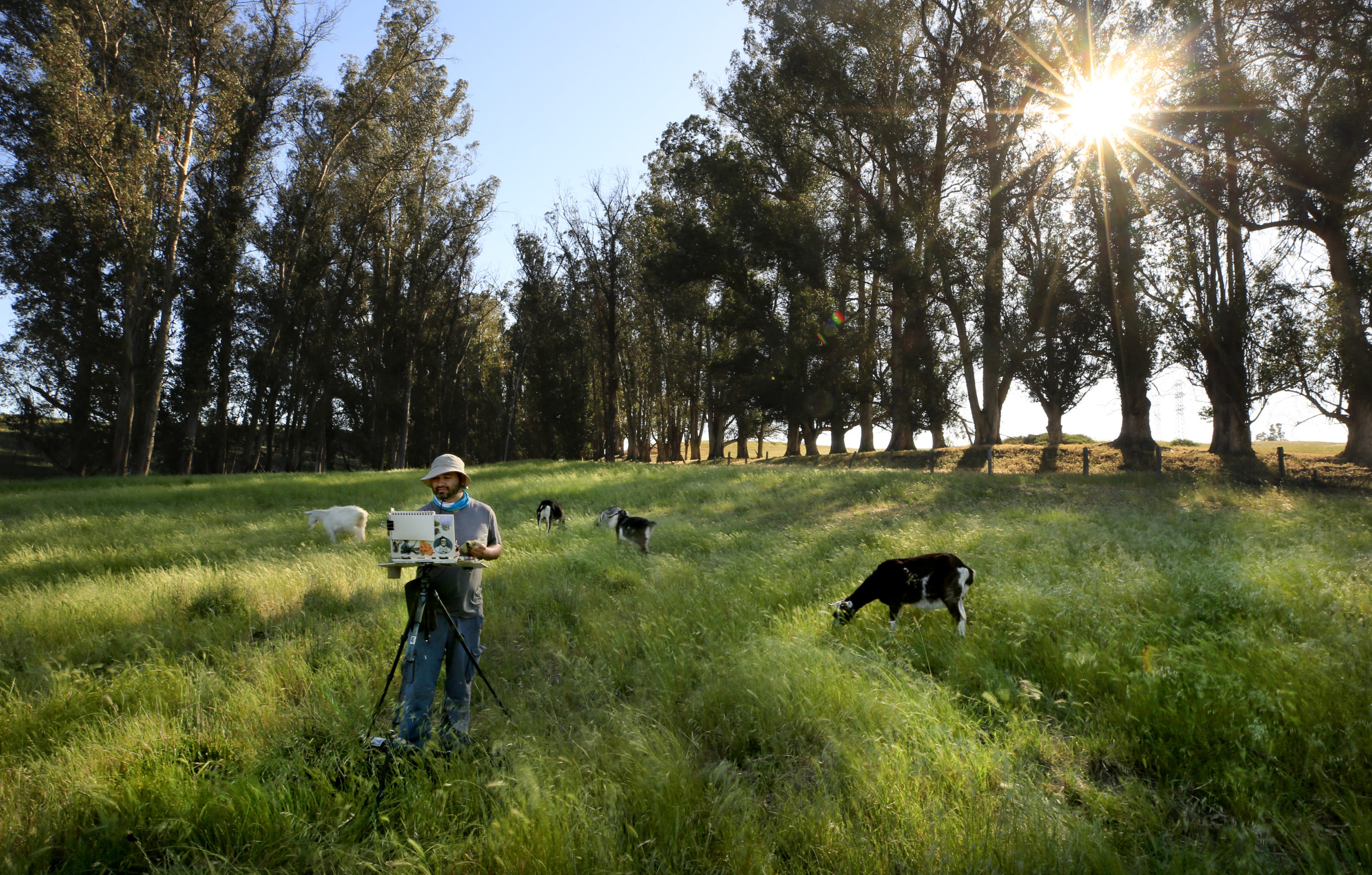

“This spot has a lot of what I like,” Lopez explains, as he adjusts his paint-spattered tripod. “It’s a vista with a lot of layers; every grouping of hills has its own way of being depicted in paint.” He opens his homemade field box, grabs tubes of gouache, and unzips a case of brushes, laid out with surgical precision. “I like the shapes the trees make, and I kind of like the vineyards, too, the geometry of them. Then, of course, the river’s right there. It’s got a little bit of everything.”
Lopez came to this work after a career as a professional illustrator. “Plein air painting has given me a reason to explore the world,” Lopez says. “Not only the whole world, but the world around me here, that I live in and interact with all the time.” Though he’s painted all over the country, Lopez, who was born in Santa Rosa, often gravitates toward home, particularly the west county. “I don’t think I’ll ever get tired of painting the coast. It’s just ever-changing. You could go to the same place every day of the week, and it’ll have a different feeling to it.”
Painting has given me a reason to explore the world. Not only the whole world, but the world around me here, that I live in and interact with all the time.
This sunny afternoon has an easygoing feeling to it. A lone hawk circles below; to the left, three butterflies flutter among the shrubs. On Lopez’s sketchpad, the scene has begun to emerge: first in ghostly outlines, then in blocky shapes. He remains focused on the landscape, playing out a rhythm of his own: wetting his brush, tapping it dry, painting, mixing, painting, mixing, eyes flicking between landscape and painting.
As a breeze rustles the leaves overhead, Lopez squints into the distance, then puts the final touches on the painting: a set of tiny barns at the juncture between a green field and geometric rows of vines. The result is breathtaking, conveying a rainbow of colors bursting from the hills and the drama of the river as it emerges. “Art gets people to look at the world differently,” Lopez says. “A good artist can change your perception of things, get you to look at the subject in a more appreciative way.”
And so he has.
— Megan McCrea
Heading Out
What to use: Lopez says gouache is a good medium for beginners because it’s easy to set up and use, with a quicker learning curve than other types of media. Once you feel confident about working with your materials, he says, “find something you feel like you can tackle in a small, simple way. Find a quiet park or a tree to sketch. You don’t have to go out to the coast and try to paint waves.”
Classes: Lopez, who exhibits his work at Christopher Queen Galleries in Duncans Mills, teaches an 8-week online course for beginning gouache painters. $130, sergiolopezfineart.com.
Groups: The Sonoma Plein Air Foundation sponsors a plein air painting festival in September. sonomapleinair.com.

Boulderer Tiffani Canevari
“Bouldering is like a puzzle,” says Tiffani Canevari. But unlike the puzzles we’ve reacquainted ourselves with this past year, Canevari must find the next piece while dangling from a rock, in some cases holding on with just one hand. “You are piecing together strength, hand position, body position, and mental fortitude, and just a small deviation in any of these can be the difference between falling and completing the route,” she says.
There are no ropes or harnesses in bouldering. It’s a type of free climbing done on rock formations just a few feet off the ground—but that doesn’t mean it’s not difficult. Bouldering allows athletes to pack harder moves into shorter climbs — difficult moves they wouldn’t be able to sustain if they were scaling a more towering feature. Canevari, a physical trainer and coach at the Santa Rosa climbing gym Vertex, is constantly working to hone her skills. She spent about five years working on one bouldering route near Salt Point State Park. “That feeling of accomplishment is worth every failure along the way,” she says without hesitation.
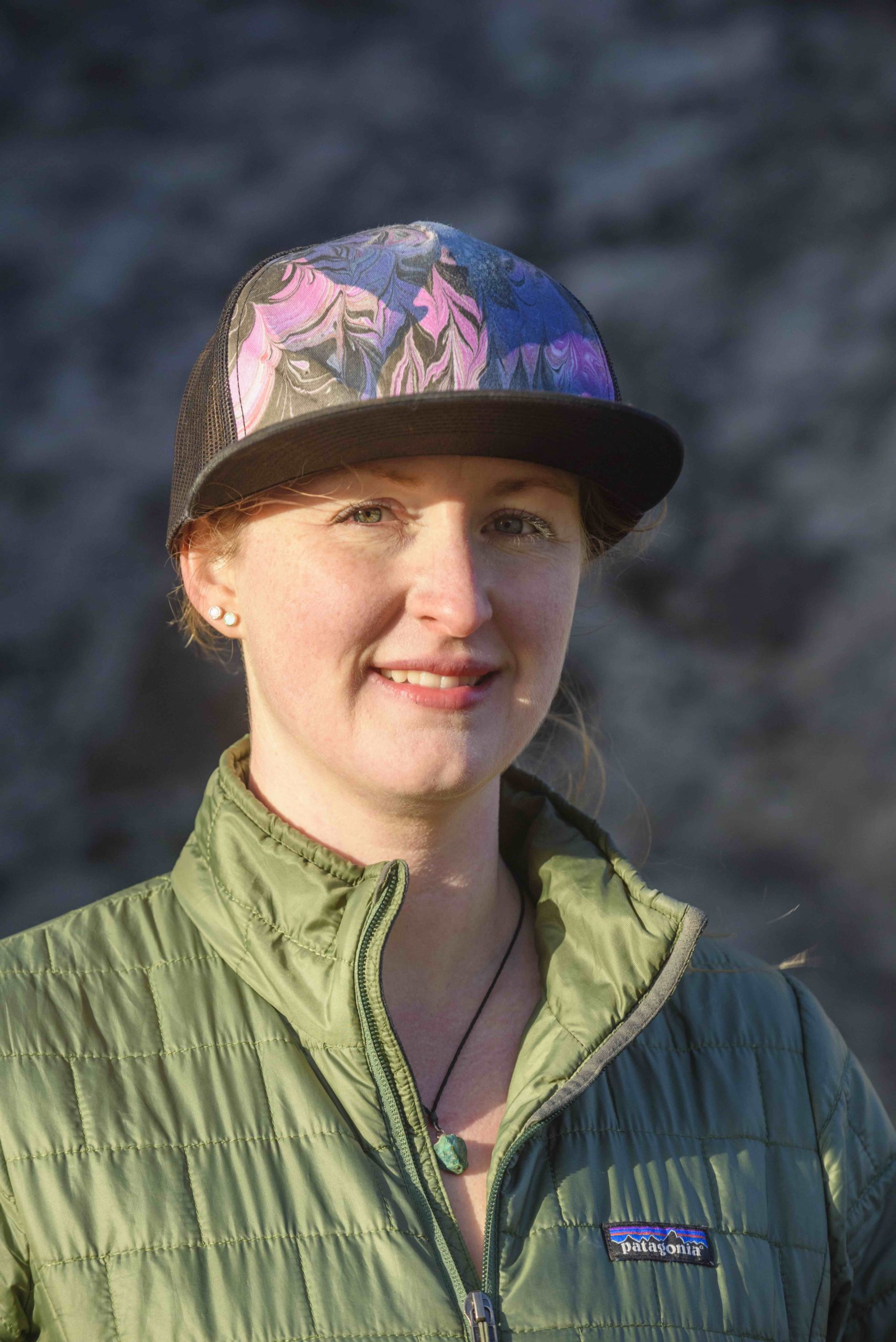
On a breezy afternoon, she stares for a moment, standing in front of the Sunset Boulders near Goat Rock Beach. With the sound of the ocean crashing in the distance, she contemplates the challenge ahead. Her chalk-covered fingers and feet work in a skilled and coordinated harmony to find their way from one crevice in the rock to the next. Canevari moves like a crab, methodically reaching and swinging her body in her quest to make it to the top. Safety is important: A spotter stands at the ready, and below her, the ground is covered with a collection of colorful crash pads to help protect her from injury if she falls.
“It’s a very humbling sport,” says Canevari. “When it comes down to it, it’s just you and the boulder and no amount of wishing and wanting will get you up it. You just have to perform.”
In Sonoma County, bouldering spots are scattered, mainly along the coast. “It gets you out in nature,” says Canevari. “There are places I’ve traveled to and remote wilderness locations I’ve hiked to that I never would have experienced it if wasn’t for bouldering.”
— Dana Rebmann
Heading Out
Beginner classes: Canevari recommends starting in a gym to build strength. Vertex in Santa Rosa offers beginner climbing and safety classes. 707573-1608, climbvertex.com Session Climbing, owned by local climber Kevin Jorgeson, known for his free climb of Yosemite’s Dawn Wall, is opening soon. sessionclimbing.com.
Clubs: Santa Rosa’s Rock, Ice and Mountain Club (on Facebook @ RockIceMountainClub) meets monthly to talk climbing and plan trips.
Where to go: Popular destinations include Sugarloaf Ridge State Park and Sonoma Coast State Beach. Climbers trade crowdsourced tips and route information on mountainproject.com. Canevari recommends the book Bay Area Bouldering by Chris Summit for detailed info on local climbs.












